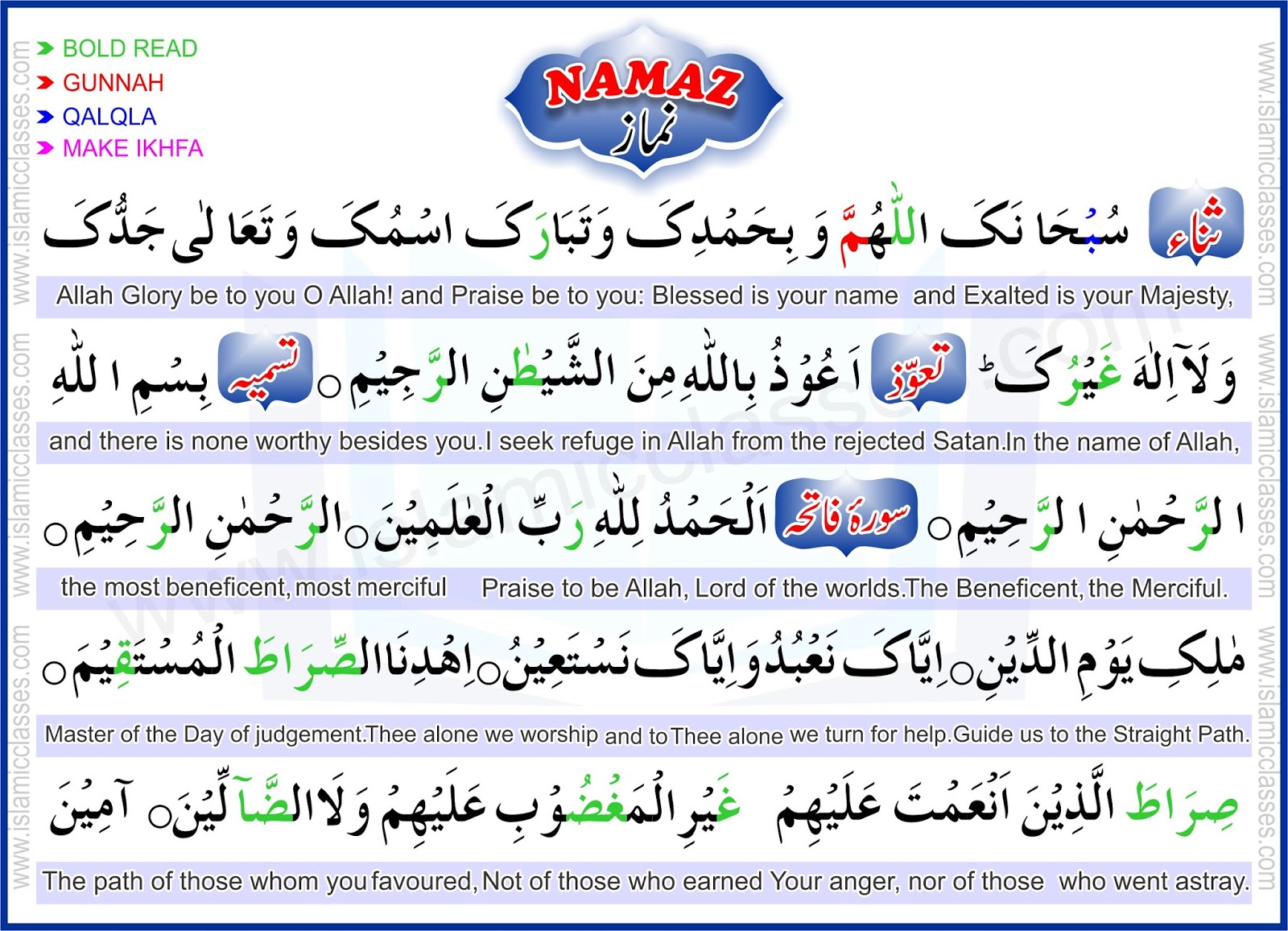Namaz, or Salah, holds immense significance in the lives of Muslims around the world. It is not merely a ritualistic practice but a profound act of worship that fosters a deep connection between the believer and Allah. However, for many, the meanings behind the words uttered during Namaz can remain elusive, especially for those who do not speak Arabic. This is where the concept of Namaz translation comes into play, helping individuals to comprehend the essence of their prayers.
The practice of Namaz involves specific physical postures and recitations, often derived from the Qur'an. While the performance of these prayers is vital, understanding the translated meanings can enhance the spiritual experience. By exploring Namaz translation, believers are equipped to engage more fully with their prayers, making each action and word resonate on a deeper level.
In this article, we will delve into the significance of Namaz translation, its benefits, and how individuals can access these translations for a more fulfilling prayer experience. Whether you are new to Islam or looking to deepen your understanding of your daily prayers, this guide will provide valuable insights into the importance of comprehending the words of worship.
What is Namaz Translation?
Namaz translation refers to the process of interpreting the Arabic words and phrases used during the Islamic prayer, known as Salah or Namaz, into a language that is understood by the practitioner. This translation may encompass the meanings of specific verses from the Qur'an that are recited during prayer, as well as explanations of the actions involved in the prayer itself.
Why is Namaz Translation Important?
Understanding the translations of Namaz is crucial for several reasons:
- Enhances Spiritual Connection: Knowing the meaning behind each recitation can help individuals connect more personally with their prayers.
- Facilitates Learning: For new Muslims or those unfamiliar with Arabic, translations provide a way to learn and understand the practice of Namaz.
- Encourages Reflection: Understanding the meanings encourages deeper contemplation and reflection on the teachings of Islam.
- Promotes Inclusivity: Translation fosters an inclusive environment where all individuals, regardless of their linguistic background, can engage in prayer.
How Can One Access Namaz Translation?
There are several resources available for individuals seeking to access Namaz translations:
- Islamic Books: Many books provide translations of the prayers along with explanations.
- Mobile Applications: Various apps are designed to assist users with translations and audio recitations.
- Online Platforms: Websites and online forums often offer comprehensive guides on Namaz and its translations.
- Community Classes: Many mosques and Islamic centers offer classes specifically focused on the translations and meanings of Namaz.
What are the Components of Namaz?
The components of Namaz consist of specific actions and recitations that structure the prayer. Understanding these elements is essential for grasping the significance of Namaz translation.
Breaking Down the Structure of Namaz
Namaz is divided into units called Rak'ahs, and each Rak'ah includes:
- Intention (Niyyah): The silent affirmation of the prayer one intends to offer.
- Takbir (Opening): Raising hands and saying "Allahu Akbar" (Allah is the Greatest).
- Recitation of Surah Al-Fatiha: The opening chapter of the Qur'an, pivotal to the prayer.
- Recitation of another Surah or verses: This can vary based on personal choice.
- Bowing (Ruku): A posture of humility before Allah.
- Prostration (Sujud): The act of submitting oneself to Allah.
- Sitting (Tashahhud): A moment of reflection and testimony of faith.
- Salam (Ending): A gesture of peace to conclude the prayer.
How Does Namaz Translation Affect Non-Arabic Speakers?
Non-Arabic speakers often find it challenging to connect with the practices of Islam due to the language barrier. Namaz translation plays an essential role in bridging this gap.
Benefits for Non-Arabic Speakers
For individuals who do not speak Arabic, Namaz translation offers the following benefits:
- Understanding the Essence: Translations provide insight into the meanings, allowing for a more engaged and heartfelt prayer.
- Encouraging Participation: Knowing the translations fosters confidence in participating in communal prayers.
- Strengthening Faith: Comprehending the prayers can strengthen one’s faith and commitment to Islamic teachings.
What Resources Are Available for Namaz Translation?
Many resources can help non-Arabic speakers understand Namaz translation. Here are a few:
- Printed Materials: Books or pamphlets outlining translations for each prayer.
- Online Videos: Tutorials that break down the prayers and their meanings.
- Community Support: Engaging with local Islamic communities for guidance and support.
How to Personalize Your Namaz Experience with Translation?
Individuals can take steps to personalize their Namaz experience through translation. Here are some suggestions:
- Study the Translations: Spend time learning the translations of the prayers.
- Reflect on the Meanings: Take moments during prayer to reflect on the significance of the words.
- Create a Comfortable Environment: Establish a peaceful space for prayer that encourages focus and reflection.
Conclusion: The Power of Understanding in Namaz
Namaz translation serves as a vital tool for fostering a deeper spiritual connection and understanding among Muslims, particularly for those who are not fluent in Arabic. By making the meanings of prayers accessible, individuals can enrich their prayer experience and strengthen their relationship with Allah. As we embrace the teachings of Islam, let us remember that understanding the words of our prayers can transform our worship from mere ritual into a profound journey of faith.
Article Recommendations
- Center Of The Universe Tulsa Oklahoma
- Heather Carnahan
- Mindy Mccready Sons Today 2024
- Macbook Keyboard Shortcuts To Flip Screen
- Elf Legolas Actor
- Burger And Fries Near Me
- Orlando Brown Houston Tx
- Fleur Cates Netanyahu
- Bela Rajput
- Oliver Patrick Short
Also Read


